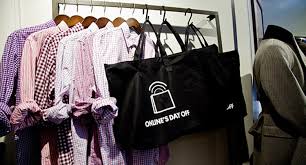Growing Business: Three Tips to Transition from Online to Brick and Mortar
 When you started your business several years ago, you never imagined the growth you see now. What began as a website you ran from your living room soon expanded into a growing company.
When you started your business several years ago, you never imagined the growth you see now. What began as a website you ran from your living room soon expanded into a growing company.
But as your company grows, you realize that you need more than just an online presence. Many of your clients prefer to meet with staff in person and want to see and touch your products before they commit to a purchase.
To accommodate their wishes and preferences, you decided to expand your ecommerce shop into a brick and mortar location. But what should you do to ensure your physical business becomes as successful as your online store?
1. Focus on Your Brand
When you work in a digital environment, you have a lot of opportunities to build awareness and establish your company's persona through email lists, press releases, and advertisement. But once you invest in a brick and mortar store, you have to make sure your physical brand matches your digital one so you continue to stand out against competitors.
For example, if you run a store that sells designer glasses at affordable prices, your physical showroom should reflect that same sense of elegance and sophistication you created through online content. The right lighting, displays, arrangement, and signage all bring your digital ideas into the physical realm.
2. Create a Safe Environment
When you run an online company, you could run the entire business on your own. But once you expand into a physical store, your customers need a lot more care and attention. They need to feel as safe walking into your store as they would using their credit card information online. And to create that feeling of safety, you need to have plenty of staff members available to offer them personalized service.
Furthermore, your property itself should help maintain that sense of security. The flooring, shelves, and lighting should all work together to ensure customers navigate your premises without risk of injury. If you worry about potential personal injury suits, talk to a lawyer like those at the Rosengren Kohlmeyer Law Offices about ways you can reduce your liability.
3. Take Advantage of Partnership Opportunities
Running a physical store takes a lot financial commitment. You have to account for the costs of leases and rental agreements as well as lighting, heating, card processing, phone plans, and liability fees. And if you overestimate your sales, your physical store may overwhelm your online income.
To cut on costs, consider teaming up with long-established companies. When you have an experienced brick-and-mortar partner, you can avoid a lot of the obstacles that many new business owners run into. And in many cases, a partnership could open up a physical retail space without the complete financial commitment of starting your own brick and mortar store.
These three steps will help you expand your business while minimizing risks. However, you should do additional research to find out more ways to cut costs and minimize stress. When you look into multiple business plans and create contingency plans, you can successfully attract customers that you would have never had online. But without proper research and legal help, you may lose much of your investment.

 Delicious
Delicious Digg
Digg StumbleUpon
StumbleUpon Propeller
Propeller Reddit
Reddit Magnoliacom
Magnoliacom Newsvine
Newsvine
Comments
Post new comment